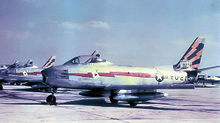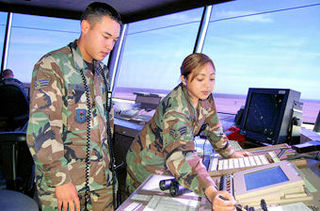
The 81st Training Wing is a wing of the United States Air Force and the host wing at Keesler Air Force Base, Mississippi. The 81st Training Wing has the Air Force's largest Technical Training Group and trains more than 40,000 students annually. Training includes weather, basic electronics, communications electronic systems, communications computer systems, air traffic control, airfield management, command post, air weapons control, precision measurement, education and training, financial management and comptroller, information management, manpower and personnel, radar, ground radio, and network control.

The 359th Fighter Group was a United States Army Air Force fighter unit that was active during World War II. Following organization and training in the United States, the group deployed to the European Theater of Operations, operating from RAF East Wretham. The fighter group flew 346 combat missions over continental Europe and claimed 373 enemy aircraft in aerial combat and strafing attacks; probable destruction of 23; and damage to 185. It was awarded the Distinguished Unit Citation for its actions. The group flew its last mission on 20 April 1945, then returned to the United States for inactivation.

The 132nd Air Refueling Squadron is a unit of the Maine Air National Guard 101st Air Refueling Wing located at Bangor Air National Guard Base, Bangor, Maine. It is equipped with the KC-135R Stratotanker.

The 188th Rescue Squadron is unit of the New Mexico Air National Guard. It is assigned to the 150th Special Operations Wing located at Kirtland Air Force Base, New Mexico.

The 61st Fighter Squadron is an active United States Air Force unit, assigned to the 56th Operations Group, at Luke Air Force Base, Arizona. It operates the F-35 Lightning II aircraft, conducting Pilot training.

The 63d Fighter Squadron is an active United States Air Force unit, assigned to the 56th Operations Group, at Luke Air Force Base, Arizona. It operates the F-35A aircraft, and conducts advanced fighter training since its reactivation in 2016. When this Squadron was reactivated in 1975, their mission was to train pilots and weapons systems officers for the McDonnell F-4E Phantom II, and they switched to the F-4D in 1978.

The 149th Fighter Squadron is a unit of the Virginia Air National Guard's 192d Fighter Wing located at Joint Base Langley–Eustis, Virginia. The 149th is the first Air National Guard fighter squadron to fly the F-22 Raptor.

The 128th Airborne Command and Control Squadron is a unit of the Georgia Air National Guard 116th Air Control Wing located at Robins Air Force Base, Georgia. The 128th is equipped with the E-8C Joint STARS.

The 78th Attack Squadron is an Air Force Reserve Command (AFRC) unit under the 926th Wing, Nellis Air Force Base, Nevada and Tenth Air Force at Naval Air Station Joint Reserve Base Fort Worth, Texas. The 78 ATKS conducts operations from Creech Air Force Base, Nevada in conjunction with their active-duty associates in the 432d Wing.

The 78th Fighter Group is an inactive United States Air Force unit. It was last assigned to the 78th Fighter Wing, at Hamilton Air Force Base, California. It was inactivated on 1 February 1961.
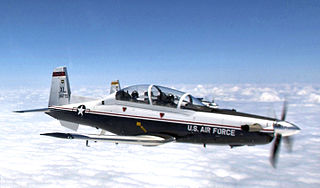
The 84th Flying Training Squadron is part of the United States Air Force 47th Flying Training Wing based at Laughlin Air Force Base, Texas. It operates Beechcraft T-6 Texan II aircraft conducting flight training.

The 93d Fighter-Interceptor Squadron is an inactive United States Air Force unit. Its last assignment was with the Albuquerque Air Defense Sector at Kirtland Air Force Base, New Mexico, where it was inactivated on 8 July 1960.

The 92d Cyberspace Operations Squadron is a United States Air Force unit.

The 91st Attack Squadron is a United States Air Force Reserve unit. Its last assignment was with the 81st Tactical Fighter Wing, stationed at RAF Woodbridge, England. It was inactivated on 14 August 1992. The squadron was redesignated the 91st Attack Squadron and activated on 5 April 2013 at Creech Air Force Base, Nevada, where it is an associate of the 432d Wing.

The 52d Operations Group is the flying component of the 52d Fighter Wing, assigned to the United States Air Forces in Europe - Air Forces Africa (USAFE-AFAFRICA). The group is stationed at Spangdahlem Air Base, Germany.

The 20th Operations Group is the flying component of the 20th Fighter Wing, assigned to the United States Air Force Air Combat Command. It is stationed at Shaw Air Force Base, South Carolina. It is a successor organization of the 20th Pursuit Group, one of the 15 original combat air groups formed by the U.S. Army before World War II.

The 36th Operations Group is the operational component of the 36th Wing, assigned to the United States Air Force Pacific Air Forces. The group is stationed at Andersen Air Force Base, Guam.
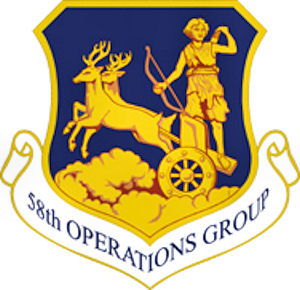
The 58th Operations Group is the operational flying component of the United States Air Force 58th Special Operations Wing. It is stationed at Kirtland Air Force Base, New Mexico.

The 172nd Attack Squadron is a unit of the Michigan Air National Guard 110th Wing located at Battle Creek Air National Guard Base, Battle Creek, Michigan. The 172nd is equipped with the MQ-9 Reaper drone.
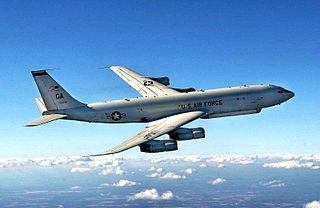
The 116th Operations Group is a Georgia Air National Guard unit assigned to the 116th Air Control Wing. The unit is stationed at Robins Air Force Base, Georgia. The 116th Group controls all operational Northrop Grumman E-8C Joint STARS aircraft of the 116th Air Control Wing. It was activated in 1992, when the Air Force implemented the Objective Wing organization, and was successively equipped with the McDonnell Douglas F-15 Eagle and the Rockwell B-1 Lancer before converting to the E-8C in 2002.




